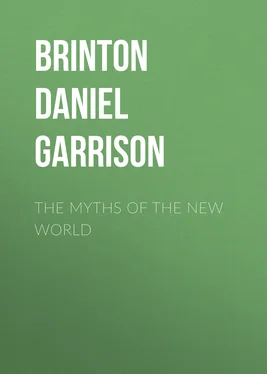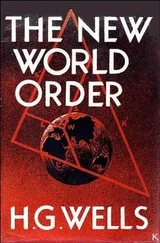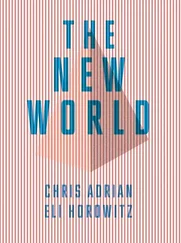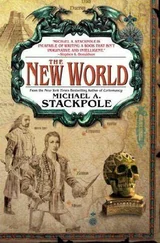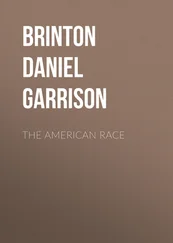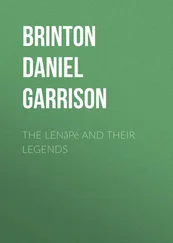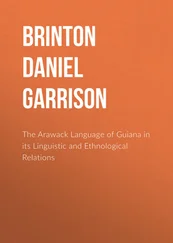Daniel Brinton - The Myths of the New World
Здесь есть возможность читать онлайн «Daniel Brinton - The Myths of the New World» — ознакомительный отрывок электронной книги совершенно бесплатно, а после прочтения отрывка купить полную версию. В некоторых случаях можно слушать аудио, скачать через торрент в формате fb2 и присутствует краткое содержание. Жанр: foreign_prose, История, Старинная литература, Мифы. Легенды. Эпос, foreign_edu, foreign_antique, на английском языке. Описание произведения, (предисловие) а так же отзывы посетителей доступны на портале библиотеки ЛибКат.
- Название:The Myths of the New World
- Автор:
- Жанр:
- Год:неизвестен
- ISBN:нет данных
- Рейтинг книги:5 / 5. Голосов: 1
-
Избранное:Добавить в избранное
- Отзывы:
-
Ваша оценка:
- 100
- 1
- 2
- 3
- 4
- 5
The Myths of the New World: краткое содержание, описание и аннотация
Предлагаем к чтению аннотацию, описание, краткое содержание или предисловие (зависит от того, что написал сам автор книги «The Myths of the New World»). Если вы не нашли необходимую информацию о книге — напишите в комментариях, мы постараемся отыскать её.
The Myths of the New World — читать онлайн ознакомительный отрывок
Ниже представлен текст книги, разбитый по страницам. Система сохранения места последней прочитанной страницы, позволяет с удобством читать онлайн бесплатно книгу «The Myths of the New World», без необходимости каждый раз заново искать на чём Вы остановились. Поставьте закладку, и сможете в любой момент перейти на страницу, на которой закончили чтение.
Интервал:
Закладка:
The comparatively late introduction of such views into the native legends finds a remarkable proof in the myths of the Quiches, which were committed to writing in the seventeenth century. They narrate the struggles between the rulers of the upper and the nether world, the descent of the former into Xibalba, the Realm of Phantoms, and their victory over its lords, One Death and Seven Deaths. The writer adds of the latter, who clearly represent to his mind the Evil One and his adjutants, “in the old times they did not have much power; they were but annoyers and opposers of men, and in truth they were not regarded as gods. But when they appeared it was terrible. They were of evil, they were owls, fomenting trouble and discord.” In this passage, which, be it said, seems to have impressed the translators very differently, the writer appears to compare the great power assigned by the Christian religion to Satan and his allies, with the very much less potency attributed to their analogues in heathendom, the rulers of the world of the dead. 68 68 Compare the translation and remarks of Ximenes, Or. de los Indios de Guat. , p. 76, with those of Brasseur, Le Livre Sacré des Quichés , p. 189.
A little reflection will convince the most incredulous that any such dualism as has been fancied to exist in the native religions, could not have been of indigenous growth. The gods of the primitive man are beings of thoroughly human physiognomy, painted with colors furnished by intercourse with his fellows. These are his enemies or his friends, as he conciliates or insults them. No mere man, least of all a savage, is kind and benevolent in spite of neglect and injury, nor is any man causelessly and ceaselessly malicious. Personal, family, or national feuds render some more inimical than others, but always from a desire to guard their own interests, never out of a delight in evil for its own sake. Thus the cruel gods of death, disease, and danger, were never of Satanic nature, while the kindliest divinities were disposed to punish, and that severely, any neglect of their ceremonies. Moral dualism can only arise in minds where the ideas of good and evil are not synonymous with those of pleasure and pain, for the conception of a wholly good or a wholly evil nature requires the use of these terms in their higher, ethical sense. The various deities of the Indians, it may safely be said in conclusion, present no stronger antithesis in this respect than those of ancient Greece and Rome.
CHAPTER III.
THE SACRED NUMBER, ITS ORIGIN AND APPLICATIONS
The number Four sacred in all American religions, and the key to their symbolism.—Derived from the Cardinal Points.—Appears constantly in government, arts, rites, and myths.—The Cardinal Points identified with the Four Winds, who in myths are the four ancestors of the human race, and the four celestial rivers watering the terrestrial Paradise.—Associations grouped around each Cardinal Point.—From the number four was derived the symbolic value of the number Forty , and the Sign of the Cross .
EVERY one familiar with the ancient religions of the world must have noticed the mystic power they attach to certain numbers, and how these numbers became the measures and formative quantities, as it were, of traditions and ceremonies, and had a symbolical meaning nowise connected with their arithmetical value. For instance, in many eastern religions, that of the Jews among the rest, seven was the most sacred number, and after it, four and three . The most cursory reader must have observed in how many connections the seven is used in the Hebrew Scriptures, occurring, in all, something over three hundred and sixty times, it is said. Why these numbers were chosen rather than others has not been clearly explained. Their sacred character dates beyond the earliest history, and must have been coeval with the first expressions of the religious sentiment. Only one of them, the FOUR, has any prominence in the religions of the red race, but this is so marked and so universal, that at a very early period in my studies I felt convinced that if the reason for its adoption could be discovered, much of the apparent confusion which reigns among them would be dispelled.
Such a reason must take its rise from some essential relation of man to nature, everywhere prominent, everywhere the same. It is found in the adoration of the cardinal points .
The red man, as I have said, was a hunter; he was ever wandering through pathless forests, coursing over boundless prairies. It seems to the white race not a faculty, but an instinct that guides him so unerringly. He is never at a loss. Says a writer who has deeply studied his character: “The Indian ever has the points of the compass present to his mind, and expresses himself accordingly in words, although it shall be of matters in his own house.” 69 69 Buckingham Smith, Gram. Notices of the Heve Language , p. 26 (Shea’s Lib. Am. Linguistics).
The assumption of precisely four cardinal points is not of chance; it is recognized in every language; it is rendered essential by the anatomical structure of the body; it is derived from the immutable laws of the universe. Whether we gaze at the sunset or the sunrise, or whether at night we look for guidance to the only star of the twinkling thousands that is constant to its place, the anterior and posterior planes of our bodies, our right hands and our left coincide with the parallels and meridians. Very early in his history did man take note of these four points, and recognizing in them his guides through the night and the wilderness, call them his gods. Long afterwards, when centuries of slow progress had taught him other secrets of nature—when he had discerned in the motions of the sun, the elements of matter, and the radicals of arithmetic a repetition of this number—they were to him further warrants of its sacredness. He adopted it as a regulating quantity in his institutions and his arts; he repeated it in its multiples and compounds; he imagined for it novel applications; he constantly magnified its mystic meaning; and finally, in his philosophical reveries, he called it the key to the secrets of the universe, “the source of ever-flowing nature.” 70 70 I refer to the four “ultimate elementary particles” of Empedocles. The number was sacred to Hermes, and lay at the root of the physical philosophy of Pythagoras. The quotation in the text is from the “Golden Verses,” given in Passow’s lexicon under the word τετρακτὺς: ναι μα τον ἁμετερᾳ ψυχᾳ παραδοντα τετρακτυν, παγαν αεναου φυσεως “The most sacred of all things,” said this famous teacher, “is Number; and next to it, that which gives Names;” a truth that the lapse of three thousand years is just enabling us to appreciate.
In primitive geography the figure of the earth is a square plain; in the legend of the Quiché’s it is “shaped as a square, divided into four parts, marked with lines, measured with cords, and suspended from the heavens by a cord to its four corners and its four sides.” 71 71 Ximenes, Or. de los Indios , etc., p. 5.
The earliest divisions of territory were in conformity to this view. Thus it was with ancient Egypt, Syria, Mesopotamia, and China; 72 72 See Sepp, Heidenthum und dessen Bedeutung für das Christenthum , i. p. 464 sqq., a work full of learning, but written in the wildest vein of Joseph de Maistre’s school of Romanizing mythology.
and in the new world, the states of Peru, Araucania, the Muyscas, the Quichés, and Tlascala were tetrarchies divided in accordance with, and in the first two instances named after, the cardinal points. So their chief cities—Cuzco, Quito, Tezcuco, Mexico, Cholula—were quartered by streets running north, south, east, and west. It was a necessary result of such a division that the chief officers of the government were four in number, that the inhabitants of town and country, that the whole social organization acquired a quadruplicate form. The official title of the Incas was “Lord of the four quarters of the earth,” and the venerable formality in taking possession of land, both in their domain and that of the Aztecs, was to throw a stone, to shoot an arrow, or to hurl a firebrand to each of the cardinal points. 73 73 Brasseur, Hist. du Mexique , ii. p. 227, Le Livre Sacré des Quichés , introd. p. ccxlii. The four provinces of Peru were Anti, Cunti, Chincha, and Colla. The meaning of these names has been lost, but to repeat them, says La Vega, was the same as to use our words, east, west, north, and south ( Hist. des Incas , lib. ii. cap. 11).
They carried out the idea in their architecture, building their palaces in squares with doors opening, their tombs with their angles pointing, their great causeways running in these directions. These architectural principles repeat themselves all over the continent; they recur in the sacred structures of Yucatan, in the ancient cemetery of Teo-tihuacan near Mexico, where the tombs are arranged along avenues corresponding exactly to the parallels and meridians of the central tumuli of the sun and moon; 74 74 Humboldt, Polit. Essay on New Spain , ii. p. 44.
and however ignorant we are about the mound builders of the Mississippi valley, we know that they constructed their earthworks with a constant regard to the quarters of the compass.
Интервал:
Закладка:
Похожие книги на «The Myths of the New World»
Представляем Вашему вниманию похожие книги на «The Myths of the New World» списком для выбора. Мы отобрали схожую по названию и смыслу литературу в надежде предоставить читателям больше вариантов отыскать новые, интересные, ещё непрочитанные произведения.
Обсуждение, отзывы о книге «The Myths of the New World» и просто собственные мнения читателей. Оставьте ваши комментарии, напишите, что Вы думаете о произведении, его смысле или главных героях. Укажите что конкретно понравилось, а что нет, и почему Вы так считаете.
